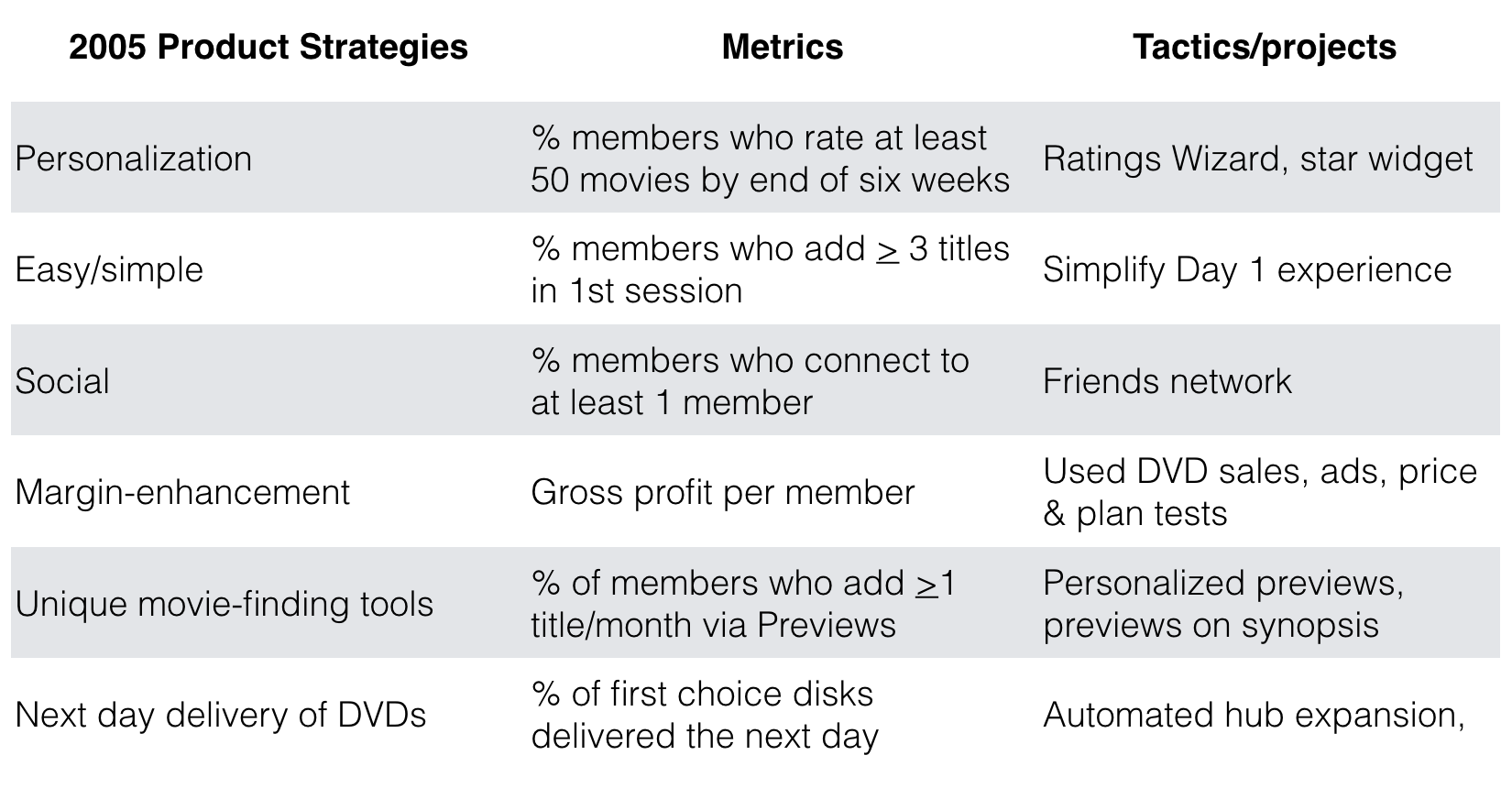#3 The Strategy/Metric/Tactic Lockup
How to assign metrics and tactics to each product strategy.

In 2005, Netflix explored six key product strategies. For each strategy, we had a team focused on experiments to prove or disprove each theory. Here’s the 2005 high-level product strategy for Netflix, coupled with metrics and tactics/projects:


At Netflix, the high-level engagement metric — that defined the product team’s ability to make the product better — was monthly retention. In the early days of Netflix’s subscription service, 10% of members canceled each month. In 2005, 5% canceled each month. Today, about 2% cancel each month. The increase in monthly retention — from 90% to 98% — is a testament to the overall product experience getting better and better.
Why do you need a proxy metric? Improving retention is hard — the progress is almost glacial. You need more sensitive, lower-level proxy metrics to see if your strategies are working. The expectation was, over time, if we moved our proxy metric enough, we would eventually improve retention.
Each of our product strategies had a clear proxy metric to determine if the strategy worked or not. And there were typically two to three projects — think of these as tactics — that brought the strategy to life.
In retrospect, we know that four of the high-level product strategies worked, and two failed (social, movie-finding tools). Over the years, we learned to double down in areas where we moved our proxy metrics and demonstrated retention improvements. We also learned to cut our losses when projects didn’t deliver.
Product Strategy Exercise (#5)
Using the Netflix Product Strategy as a guide, articulate each of your high-level strategies, the proxy metric for that strategy, along with projects against each strategy.
In the next essay, I dive deeper into identifying proxy metrics. I will focus on the theory that a simple product experience improves retention. Click below to learn more:
Thanks,
Gib
Gibson Biddle
PS. Here’s an index of all the articles in this series:

